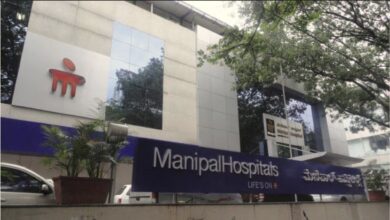The Big Dreams Of Small Finance Banks
All the 10 small finance banks that have got the in-principle licence from the Reserve Bank of India (RBI) are now armed with the regulator’s final nod; eight of them are up and running. How have they been doing?
Two in the lot—Equitas Small Finance Bank Ltd and Ujjivan Small Finance Bank Ltd—are part of listed entities; their financials are in the public domain. Recently, I caught up with R. Baskar Babu, one of the founders of New Mumbai-based Suryoday Small Finance Bank Ltd. It started operations on 23 January, the same day its peer Utkarsh Small Finance Bank was launched in another part of India, Varanasi. These two are not the last ones to take off. ESAF Small Finance Bank Ltd, Kerala’s first private bank after Independence, took off on 17 March in Thrissur; it has already grabbed some Rs350 crore deposits.
In comparison, Suryoday’s deposit mobilization is at Rs35 crore. It is focussing on retail deposits. The bank has plenty of money in its vault and wants to play safe during the transition from a microfinance institution (MFI) to its current avatar. Eight of the small finance banks were MFIs, while one was a local area bank and another a non-banking financial company.
Every senior executive of Suryoday, including Babu, has taken responsibility for raising retail deposits from their friends, acquaintances and relatives besides existing borrowers. Babu has set a Rs25 crore target for himself. It is offering 9% interest on retail fixed deposits for one-two years and 0.75% more for senior citizens; the rate of bulk deposits is lower. Its savings bank rate is 6.25% for below Rs1 lakh, and 7.25% for more than Rs1 lakh up to Rs10 lakh.
Small banks are not worried about deposit collection as India’s high street banks are flush with money; they are not chasing term deposits as their loan books are not growing. The liquidity surge in the banking system follows the so-called demonetization exercise in November-December when India’s central bank withdrew 86% of the currency in circulation, leading to a mad rush by citizens to return old high-value currency notes to banks.
While all small finance banks are thanking the demonetization move for the relative ease in collecting deposits, they blame it for the sudden deterioration in their asset quality. Suryoday, which had 0.15% bad assets, is now saddled with around 6% gross non-performing assets or NPAs; after setting aside money, its net NPAs are 4.5% as cash-strapped borrowers are refusing to pay. Farm loan waivers by a few Indian states and the noise in the political circles for such waivers in other states are also vitiating the atmosphere. Suryoday’s loan book has reduced from Rs1,100 crore to Rs1,000 as it is selective in giving loans in affected geographies.
The system of most small finance banks probably is not equipped to handle the sudden surge in NPAs. To put things in perspective, typically, small loans are collected in group meetings. If an hour is allotted for such a meeting for 20 borrowers, it can probably have time to discuss one defaulter but if there are four defaulters, there isn’t enough time to discuss their issues and chase them as that delays the next meeting and the entire chain of meetings gets disrupted.
For microfinance institutions and small finance banks, tackling delinquency is more a procedural issue and technology, however smart, is of little help. Under regulation, 75% of small banks’ loans must be disbursed to weaker sections of society and other target segments under the so-called priority sector tag (for universal banks it is 40%) and up to Rs10 lakh of such loans do not need to be backed by any collateral security.
The average size of Suryoday’s outstanding microfinance loans is Rs12,500 and average disbursement is Rs30,000. It started with one bank branch and 220 doorstep service centres (the branches of the microfinance entity); since launch, it has ramped up the branch network to 11, in west and south India. Babu is more comfortable with the smaller format of branches and wants to convert the current microfinance branches into bank branches as the running cost of such a branch is Rs2-Rs.2.5 lakh a month, one-fifth of a regular bank branch in a metro; the cost could be even higher for a larger format branch. The last RBI guidelines have allowed small finance banks to continue with such service centres for three years.
What are the challenges before a small finance bank?
Technology, according to Babu, is not the biggest challenge as it’s not difficult to access quality systems. Human resources is probably a relatively bigger change. Suryoday has increased its workforce from 1,700 to 2,200 in the run-up to its launch. It has hired people from India’s new private banks. At the top tier, there are 10 executives—eight of them joined in the last 21 months during the transition and rollout phase. The bank has given stock options to 200 employees and plans to extend it to around 800.
Initially, all bank branches are being run by managers with banking experience but the next set of branch managers will be hired as well as groomed from among the MFI employees. At the junior level, the salary range for branch banking staff is around 25% more than the MFI field employees. Babu says this gap will narrow and probably disappear over a period of time.
An even bigger challenge is compliance with RBI norms— quite logical when one migrates from light-touch regulation to a highly regulated arena. All small finance banks are employing consulting firms and former bankers to handhold them on the tricky path of compliance, but most do not fully know what they are supposed to do to ensure that they are fully compliant. It’s a sort of black box for them. Issues such as internal audit, cyber security and overall compliance are taking a lot of management bandwidth.
The biggest challenge, for many, is how to delegate responsibilities to the executives below the line. For most small finance banks—not all—the promoters/founders are at the driver’s seat as managing directors and chief executives, and it is not easy to delegate effectively, ensuring adequate controls. A few of them have done it. They are focussing more on strategies and marketing the bank instead of getting bogged down by day-to-day operations.
With a Rs500 crore net worth and a Rs1,000 crore loan book, Suryoday’s leverage is low. It charges 23% interest on small unsecured loans which constitute 98% of its loan book; the remaining 2% are loans against property or LAP (Rs3-5 lakh) and loans given to shopkeepers (Rs2-5 lakh).
The plan is to bring down the interest rate with the rise in deposit portfolio (the average cost of deposits is 9% Vs 12% on bank loans which it was taking as an MFI). It also plans to focus more on loans against property, loans to shopkeepers and loans for low-cost housing to bring down the portion of unsecured loans and ensure that a range of products are available as customers graduate from group loans.
At the end of the first year of operations, Suryoday aims to collect Rs750 crore deposits, disburse Rs1,800 crore loans, have 90 bank branches with a total of 3,000 employees and double its customer base from 750,000 to 1.5 million. Babu believes that the opportunity is huge and profitability can be sustained if the bank can meet other financial needs of its customers, beyond loans. He is investing in analytics to figure out what the customers want and prepare new products for them.
Suryoday’s aspiration is in line with all other small finance banks who are dreaming big. If politicians stop spoiling the credit culture, clamouring for loan waivers, the small finance banks can change India’s banking landscape. Rise in bad loans can crash many dreams.




